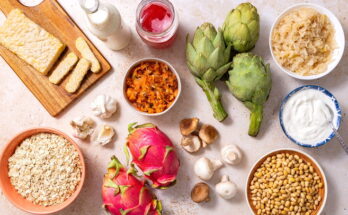Hummingbird Food Recipe: Ever watched a tiny hummingbird hover and feed from a flower or nectar feeder? Feeding these beautiful creatures can bring joy to your garden and help them thrive. But here’s the thing—store-bought nectar isn’t always the safest option. By making your own hummingbird food at home, you’ll not only ensure their health but also save money.
In this guide, we’ll walk you through the perfect hummingbird food recipe and all the tips to keep those little flyers coming back.
What You’ll Need to Prepare Hummingbird Food
Before diving into the recipe, gather the following ingredients and tools:
Ingredients
- 1 cup of white granulated sugar
- 4 cups of water
Tools and Equipment
- Saucepan
- Measuring cups
- Spoon for stirring
- A clean feeder for the nectar
That’s it! You only need two ingredients—simple and effective.
Is Store-Bought Nectar Safe? A Quick Comparison with Homemade Recipe
While store-bought nectar is convenient, many contain unnecessary additives like red dye and preservatives that can harm hummingbirds over time. On the other hand, homemade nectar mimics the natural sweetness they get from flowers, without any harmful chemicals. It’s safer, cheaper, and just as effective.
Step-by-Step Hummingbird Food Recipe
Step 1: Measure Ingredients
For a standard batch, use 1 part sugar to 4 parts water. For example, 1 cup of sugar to 4 cups of water.
Step 2: Boil Water for Purity
Bring the 4 cups of water to a boil. Boiling eliminates bacteria and impurities, ensuring the nectar stays fresh longer.
Step 3: Add Sugar
Once the water is boiling, remove it from heat and add the 1 cup of sugar.
Step 4: Stir Until Fully Dissolved
Stir the sugar into the hot water until it is completely dissolved. This ensures there are no granules left.
Step 5: Cool the Mixture
Let the nectar cool to room temperature before filling your feeder. Avoid adding hot nectar directly into the feeder, as it can harm the birds.
Sugar-to-Water Ratio: Why it Matters
The standard 1:4 ratio closely mimics the natural nectar hummingbirds feed on in flowers. Using too much sugar can harm their liver, while too little sugar won’t give them enough energy. Stick to the recommended ratio to keep them healthy.
Why Avoid Using Honey, Artificial Sweeteners, or Red Dye
- Honey can ferment quickly and cause fungal infections in hummingbirds.
- Artificial sweeteners provide no energy, which can starve the birds.
- Red dye is unnecessary and may be harmful to hummingbird health.
How to Store Hummingbird Food
Store any leftover nectar in a sealed container in the refrigerator. It will stay fresh for up to a week. Discard any unused nectar after that time to prevent fermentation.
How Often Should You Refill the Feeder?
It’s crucial to replace the nectar every 2-3 days, especially in hot weather, to prevent mold or bacteria from growing. Clean the feeder regularly to maintain a healthy environment for the birds.
How to Clean a Hummingbird Feeder
- Take the feeder apart and rinse it thoroughly with warm water.
- Use a bottle brush to clean all parts, including the feeding ports.
- Avoid using soap, as it can leave a residue harmful to the birds.
- Rinse thoroughly and let it air dry before refilling.
Signs Your Hummingbird Nectar has Gone Bad
If you notice cloudiness, mold, or a foul odor, it’s time to change the nectar. These signs indicate the food has spoiled and can be dangerous for the birds.
When to Stop Feeding Hummingbirds
In many areas, you can leave the feeder up until hummingbirds migrate in the fall. However, it’s okay to keep feeding them as long as they’re around—migrating birds need all the energy they can get.
How to Attract More Hummingbirds to Your Feeder
Want to see more hummingbirds? Try planting hummingbird-friendly flowers like salvia, bee balm, and trumpet vines. You can also place multiple feeders around your yard to reduce competition among birds.
Troubleshooting Common Problems with Hummingbird Feeders
- Ants and Bees: Use an ant moat or place the feeder in a shady spot to reduce insect problems.
- Leaking Feeder: Check for cracks or loose parts and ensure the feeder is hung level to prevent leaks.
The Impact of Feeding Hummingbirds on Their Ecosystem
Feeding hummingbirds doesn’t affect their migration patterns. Instead, it offers a reliable food source during migration and breeding seasons. However, it’s essential to provide nectar responsibly to avoid disrupting their natural behavior.
FAQs about Hummingbird Food Recipe
1. What is the basic recipe for hummingbird food?
The basic recipe for hummingbird food is simple and requires only two ingredients: sugar and water. Mix 1 part white granulated sugar with 4 parts water. Boil the mixture for 2 minutes to eliminate any impurities and to help dissolve the sugar. Let it cool before filling your feeder.
2. Can I use honey or brown sugar instead of white sugar?
It’s best to avoid using honey or brown sugar when making hummingbird food. Honey can ferment quickly and potentially harm the birds, while brown sugar contains molasses, which can be detrimental to their health. Stick to plain white granulated sugar.
3. How often should I change the hummingbird food in the feeder?
Replace the hummingbird food every two to three days, or more frequently if the weather is very hot, as the sugar solution can ferment and grow bacteria that could harm the birds. In cooler weather, changing it once a week may be sufficient.
4. Do I need to add red dye to the hummingbird food?
No, adding red dye to hummingbird food is unnecessary and could be harmful to the birds. Most hummingbird feeders already have red parts that attract the birds, so just the clear sugar solution is sufficient.
5. How do I properly clean the hummingbird feeder?
Clean your hummingbird feeder at least once a week with hot water and a mild detergent, or more often if it appears dirty. Rinse thoroughly to ensure no soap residue remains. You can also use a solution of one part white vinegar to four parts water for cleaning.
6. Where is the best place to hang a hummingbird feeder?
Place your hummingbird feeder in a shaded area to prevent the sugar solution from fermenting too quickly. Ensure it’s visible and near flowers that attract hummingbirds, but away from busy or noisy areas to provide a safe and peaceful feeding environment.
Conclusion
Feeding hummingbirds is a wonderful way to connect with nature and support these fascinating birds. With this simple recipe and a bit of care, you can keep them healthy and happy all season long. Just remember to avoid harmful additives and keep the feeders clean—your backyard will soon become their favorite hangout spot!
References
For those interested in delving deeper into the art of making hummingbird food and ensuring it’s safe and nutritious for our tiny feathered friends, the following resources are invaluable. These references provide reliable information that supports the content discussed in our Hummingbird Food Recipe article, offering readers a chance to explore the subject further:
- The Hummingbird Society: This website is dedicated to the preservation of hummingbirds and offers extensive insights on how to prepare homemade hummingbird nectar safely. Visit The Hummingbird Society
- Audubon Society: Known for their bird conservation efforts, the Audubon Society provides guidelines and best practices on feeding hummingbirds, including the proper sugar-to-water ratio and hygiene tips. Read More on Audubon
- National Wildlife Federation: As a major player in wildlife conservation, they offer a comprehensive guide that covers not only how to make hummingbird food but also how to create a welcoming habitat for them in your garden. Explore National Wildlife Federation
Each of these sources has been selected for their authority and trustworthiness in avian care, ensuring that you get the most accurate and practical information available.


